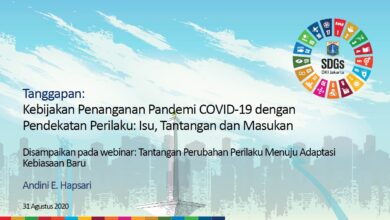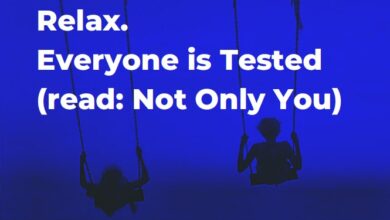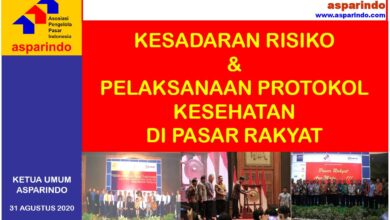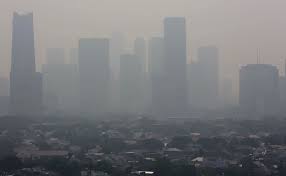
February 23, 2019
Jakarta: It was our fourth trip to the doctor in three months and I was fed up.
Our four-month-old twins were sick again, coughing and spluttering, and so was our two-and-half-year-old girl.
Before moving to Jakarta, I’d had all manner of briefings and discussions about what lay ahead – everything from double taxation treaties to what to do if I was shot at or kidnapped.
What I didn’t factor in was that Jakarta’s infamous pollution could be making my kids sick.
Soon after I moved from Canberra, the ABC’s then-Jakarta correspondent, Adam Harvey, suggested I download the “Air Visual” app to my phone.
The app displays the AQI (air quality index) ratings for cities around the world by measuring five major air pollutants. Much of the data comes from US embassies.
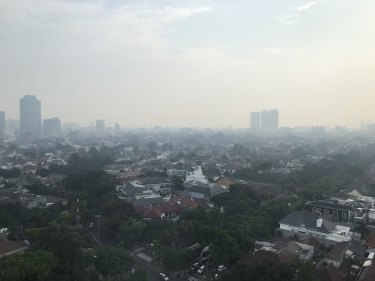
In particular, it highlights the level of fine particle pollution – known as PM 2.5 – because these polluting particles are less than 2.5 microns in width (30 times smaller than a human hair).
PM 2.5 particles are a particular concern because they can travel deep into a person’s lungs and cause long-term damage.
Jakarta’s readings are appalling. On the AQI Index, a reading of zero to 50 is considered “good”. From 51 to 100 is moderate, 101-150 is “unhealthy for sensitive groups” and over 150 is unhealthy for everyone. The scale runs up to as high as 500: “hazardous.'”
In the dry Jakarta winter, AQI readings rise as high as 150 or 160. A “good” day can be as high as 100 or 110. The wet season is a bit kinder, because the torrential summer rains clear out some of the pollution.
(As I write this, the AQI is 16 in Melbourne and 17 in Sydney. At the other end of the spectrum, another friend, ABC Delhi correspondent Siobhan Heanue, has reported on AQI and PM 2.5 levels that run into the hundreds and the debilitating health effects of living in one of the world’s most polluted cities.)
So as I sat in that south Jakarta medical clinic, I began researching how I could help my kids breathe a little easier and protect their health.
The obvious answer was indoor air purifiers, a technology that millions of Jakarta residents will never be able to afford.
Foreign embassies through out the capital have bought and installed purifiers for their staff.
I spoke to our doctor and he recommended we buy units for the bedrooms and the living room, though he added that not much actual scientific research has been done into exactly how effective the units are.
A good purifier typically uses a HEPA (high-efficiency particulate air) filter, which is supposed to remove tiny polluting particles such as dust and pollen from the air.
I purchased a couple of units and, a couple of months later, bought a battery-powered AQI monitor to check the readings in each room of our house. The results were telling.
In each of the kids’ bedrooms, the AQI levels are between 16 and 25 with the purifiers running. The levels rose to around 50 within 10 minutes of the purifiers being turned off.
In my bedroom and in our loungeroom, the AQI levels typically hover around 75. It’s the same in the kitchen, though the levels can rise to as much as 150 when we cook a steak on the stove.
Professor Lidia Morawska, an air-quality expert at the Queensland University of Technology, says in a highly polluted city such as Jakarta, the impact on people’s health is severe.
“There is no organ that is not affected. There are respiratory effects, cardio-vascular effects, systemic impacts and neurological impacts over the longer term,” she says.
Face masks, a common sight on the streets of many Asian capitals, don’t do much good unless they are properly fitted, she adds.
And air purifiers?
“There can be situations where they help. But in many cases it could just be a false feeling of protection.”
That’s because, for example, people leave bedroom doors open, or open the windows to the outside, allowing outside air in – thus, negating the purification that has taken place.
Professor Michael Abramson, a Monash University expert, says air purifiers with HEPA filters do remove some of the fine particles that make people sick.
But if the purifier is to help, “they [people] have to stay inside for more of the day, otherwise they will suffer from even a short amount of time being exposed [to polluted air]”.
Five months later, our three kids are sick less frequently. Of course, air purifiers are not a magic bullet. Illness still regularly runs through our house – the germs our daughter brings home from pre-school make sure of that.
And as Morawska says, if you really want to avoid the impact of harmful pollution: “It is very difficult to give any piece of advice other than people simply shouldn’t live in these situations.”
My family and I will be here for three years and are lucky enough to be able to afford purifiers to try to manage the situation.
For millions of Jakartans, that’s simply not an option.
Artikel ini telah dipublikasikan https://www.smh.com.au/world/asia/postcard-how-i-became-obsessed-with-jakarta-s-air-quality-20190222-p50zqs.html pada tanggal 23 Februari, 2019.
Oleh: James Massola, The Sydney Morning Herald
